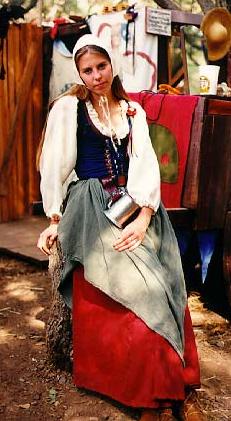


Cotton, although common in this day and age, was expensive and uncommon before the rise of the cotton gin.Harvested cotton was cleaned by hand, a lengthy and laborious process. Cotton was imported from India or the Americas with an associated high cost before taxation. Cotton was an expensive fabric up til the 1800s.
Flax and wool were the more common fibres. Flax (a plant called flax) is made into linen, which while expensive now, wasn't when it was homespun. Wool yarn became wool fabric of all weights, including tweed which was woven wool fabric that had been beaten on one side while wet to form a wooly, wind-proof material.
A typical man's outfit would include boots, breeches (pants), a shirt, a jerkin (vest), and a hat. A typical woman's outfit would include shoes, an over and under skirt, a shirt, a bodice, and a hat or snood. Long hair is generally braided. Children were dressed as infants only until about the age of three, then they dressed identically to adults (albeit smaller).
The best way to get an idea about costumes is to attend a faire and take careful notes about what people are wearing. Or go to your local library and find some books about the period. Of course there are always more pictures of Nobility than the peasants who actually did the work.